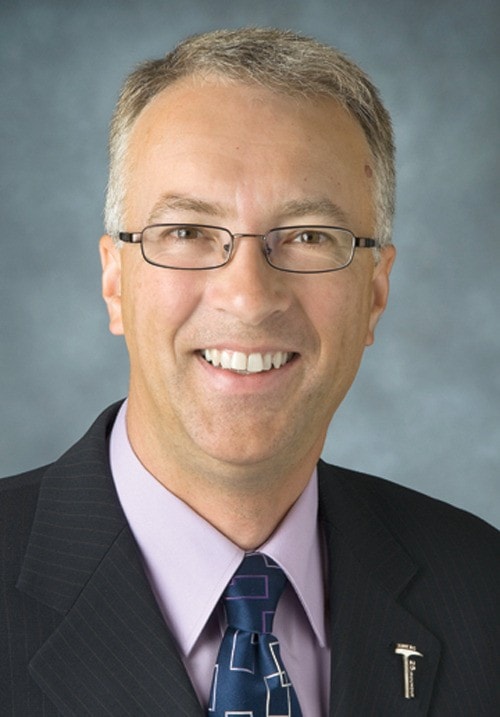During a recent visit to Burns Lake, Nechako Lakes MLA John Rustad questioned the fee for service model proposed by the Burns Lake Medical Clinic Society for their community clinic.
He said that while the fee for service model may be working okay for physicians that own and operate a private clinic, he is not sure how the model will work for the society's proposed clinic.
He said he is also concerned about the cohesiveness of physicians hired by the community, as opposed to being hired by their peers.
"They have to work together. Usually doctors attract other doctors. They sell the clinic, the community and the lifestyle and they work in close contact with scheduling and hospital duties.”
“If you have a conflict at a community owned clinic, who is responsible?”
“The proposal sounds great, but I think that there are a lot of big issues that need to be discussed."
Rustad also said when the community runs a clinic the lines between the province, the health authority and the community become blurred.
He made the comments to society members last week during a cheque presentation by the Burns Lake and District Health Care Auxiliary to the society.
The auxiliary presented the society with a cheque for $25,000 towards the start up costs for the proposed clinic.
Maria Varga, society member said the timing of Rustad's comments was inappropriate.
"It was uncalled for and really unprofessional," she said, adding that Rustad could have arranged to meet with society members to discuss the issue privately, rather than during the cheque presentation.
Rustad later said to Lakes District News that while he is happy to see community members step up to the plate to correct the health care situation, he is concerned about the proposed structure of the clinic.
He said he has not yet met with society members to discuss their proposal, but is open to sitting down with them to suggest they look at offering an alternative payments plan model rather than the fee for service model they are proposing.
Under a fee for service model, physicians are funded through the province with respect to how many patients they see.
The alternative to fee for service is the alternative payments plan model, whereby doctors are paid a salary through the province based on experience and location, regardless of how many patients they see per day.
"Under the fee for service model, doctors are paid to run the clinic as well as hire more doctors, nurses and support staff. If the community, or a society is running the clinic, how then do you deal with the fee schedule? This is a big question for me," Rustad said.
He also questioned the source of the problem in Burns Lake.
He said the fee for service model, which is currently used at the privately owned Burns Lake Medical Clinic is part of the problem of attracting physicians to the community, however Varga said she disagrees.
She said that if the goal is to attract physicians to the community then you have to go with a fee for service model.
"It may not be what the government wants, but it is what the physicians want," Varga said.
She said the structure of the proposed clinic is already proving to be successful, as a number of doctors are already interested in coming to live and work in Burns Lake.
She also said that although the current Burns Lake Medical Clinic is working under the fee for service model, there is more difficulty attracting physicians to come and work in Burns Lake because doctors are expected to pay a fee to practice at the clinic.
Donna Brochez, society secretary said, "We have only had positive comments about our proposal so far. Every community operates in a different way and while the alternative payments plan may be working for some communities, we are confident that a fee for service structure will work for us here in Burns Lake."
Varga said she feels it would be far more difficult to attract physicians to work at the community clinic under an alternative payments plan model.
"Here in the North, with the physician shortage, physicians are usually seeing 50 to 55 patients per day. For a general practitioner to come and work up North and be paid a salary they would feel like they are doing more work and getting paid less," she said, adding that a doctor seeing 30 patients a day would be paid the same as one seeing 55, under the alternative payments plan.
"Our clinic will not be a private clinic," she said, adding that she also wants to clear up any confusion.
"Patients will be able to come in with a B.C. Care Card and see a doctor. Patients will not have to pay a membership fee."
As for any further explanation about the structure of the clinic, Varga said it is none of Rustad's business.
She said it is also none of Rustad's business who is managing the clinic and hiring doctors.
"If he wants to be involved in the clinic, then he should put in some money. He should be working for the community, like he was elected to do," Varga said.
She said she has also heard several comments from others regarding a conflict of interest by having two medical clinics in Burns Lake and said, "We have a number of banks and credit unions, two supermarkets, three pharmacies .... is that not a conflict then as well?"
Brochez said the society has a meeting scheduled with Northern Health for Jan. 16, 2012.
"For the moment it is steady as you go, we are not going to deviate from our plans unless we need to. Whatever happens it will be for the benefit of the community," she said.
Currently the society has raised $27,000 and need $180,000 more to cover the start up costs.
